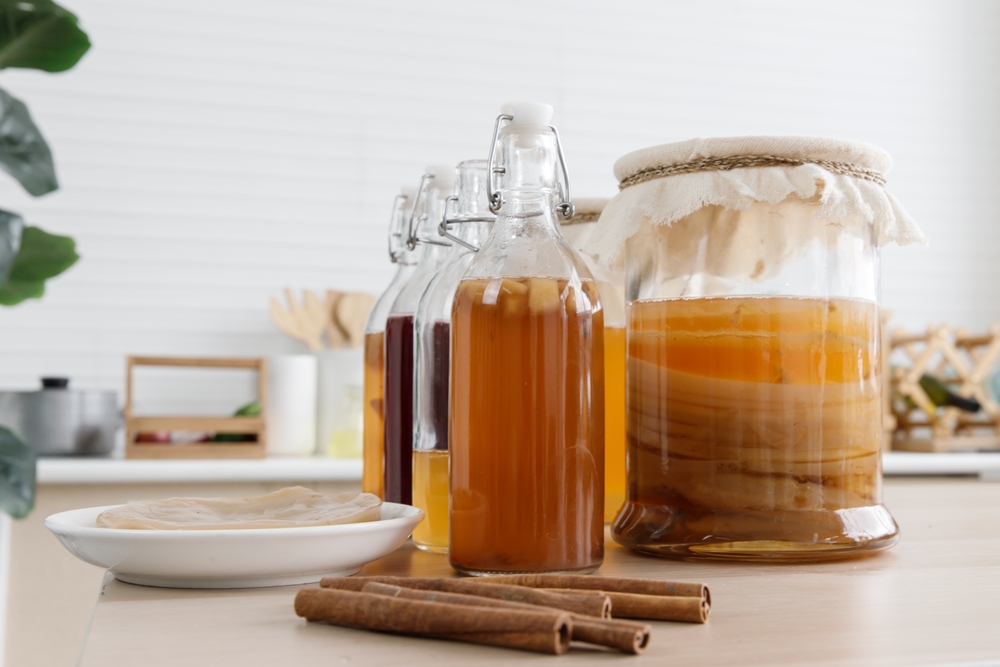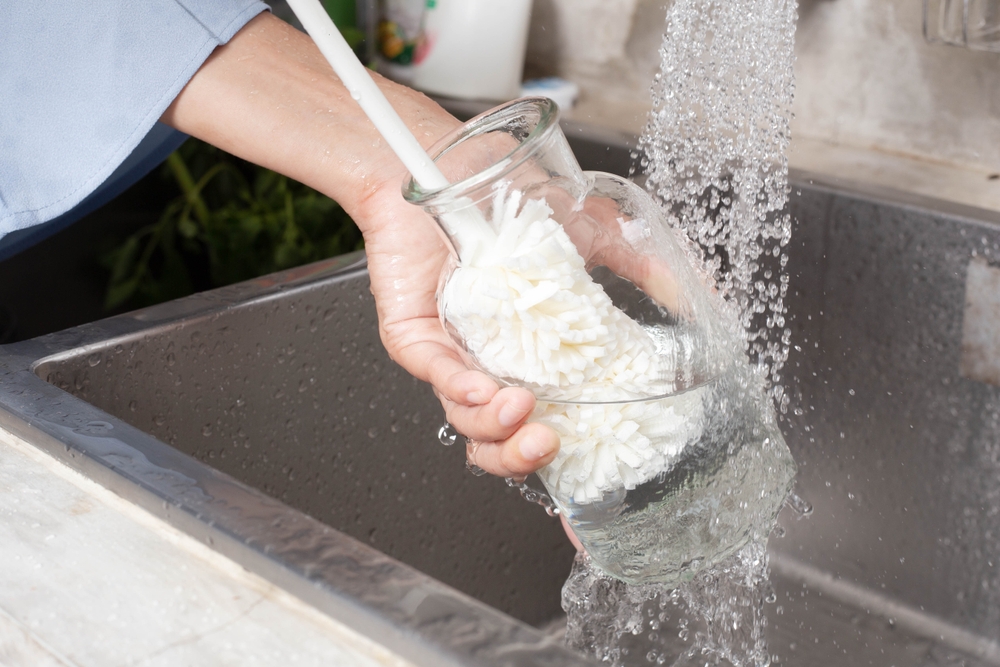Cleaning kombucha bottles is essential to prevent the growth and contamination of harmful bacteria. Cleaning a kombucha bottle doesn't require much—you'll need warm water, dishwashing soap, the right cleaning supplies, and the proper technique.
Table of Contents
Does Kombucha Need to Be Stored in Glass?
For your safety, kombucha is best stored in glass containers such as mason jars, flip-top bottles, or larger glass bottles.
While you can technically store kombucha in a plastic container, it is easier for bacteria to grow in plastic. Also, the built-up carbonation during the second fermentation can cause the container to deform and potentially burst.
Glass containers, on the other hand, can withstand a higher amount of force throughout the brewing process. This type of container also has a more airtight seal compared to plastic bottles and caps.

Furthermore, it’s important to note that kombucha’s normal fermentation process lasts one to two weeks. Exposing kombucha to plastic containers for prolonged periods can lead to some chemicals in the plastic, like bisphenol A and phthalates, leaching into the kombucha. This can be even more amplified when the kombucha is exposed to warm temperatures.
How Often Do You Need to Clean Fermenting Jars?
The good news for the busy kombucha brewer is that you don’t have to clean the kombucha fermenting vessel too often. Generally, it is recommended to clean your brewing vessel once a year or every 18 months. However, if you notice signs of mold during the first or second fermentation, you may want to discard your brewing batch, clean it, and start anew.
The reason why you don’t have to clean them often is because of the hostile environment within the vessel itself. Kombucha is acidic, making it naturally difficult for bacteria and fungi to grow.
Do Kombucha Bottles Need to Be Sterilized?
Unlike the brewing jar, you need to wash the drinking bottles after every use to avoid bacterial growth. You don’t have to sterilize kombucha bottles, granted that you’ve rinsed them thoroughly with warm water and dish soap. You should also dry them so that there won’t be any residual moisture left on the bottle.
That said, extra sterilization never hurts, so if you want to take additional steps to clean the bottle, you’re more than welcome.
How to Clean Kombucha Bottles and Jars
Cleaning kombucha tea bottles and jars is a straightforward process. Here’s how to do it:
- Rinse the bottles with water.
- Pour distilled white vinegar into the kombucha bottles.* (refrain from using apple cider vinegar)
- Swish the bottle so that the vinegar comes into contact with all sides of the container.*
- Pour out the white vinegar.*
- Submerge the kombucha bottles in a soapy water solution.
- Rinse the bottles thoroughly with water for the second time.
- Pat the bottles with a clean cloth and leave them to dry.
With this method, you can also clean the other kombucha brewing supplies (like the knives and scissors used to cut the SCOBY).
*The white vinegar steps are optional, but it slows down the appearance of harmful bacterial growth due to the high percentage of acetic acid.
How Do You Get the Scum off a Kombucha Jar?
Yeast and bacteria will sometimes cling to the side or bottom of the kombucha jar despite being washed with water. This is normal, but trying to remove them can be quite an ordeal.
If there’s some stubborn residue sticking to a part of the glass container, use bottle brushes or sponges to scrape them out. These cleaning supplies should be rinsed with warm water and dishwashing soap. Of course, ensure that these brushes or sponges are clean and not contaminated with old food particles.

Can You Put Kombucha Bottles and Brewing Vessels in the Dishwasher?
Yes. If you find the hot water bath too tedious, you can put your kombucha brewing vessels and bottles in the dishwasher.
Remove the lids and food debris before running the wash. Be careful about which soap you use, as any remaining soapy residue could negatively interact with the subsequent kombucha batches.
A Few Things to Keep In Mind
Here are some final tips to help home brewers like yourself improve your kombucha-cleaning game.
- Leave the kombucha SCOBY and starter tea in a temporary, sealed container while washing.
- If the SCOBY is hard to remove, use a knife to scrape it out gently.
- Use a kombucha-only sponge or brush to keep food residue away from the bottles.
- When conducting the water bath, leave the kombucha bottles upside down.
- You can start the cleaning process earlier than usual if you notice detrimental changes (smell, discoloration, etc.)
- Carefully heating the glass containers in the oven is another way to sterilize kombucha bottles, but a bit risky.
- Make sure the kombucha jars are dry before adding your new kombucha brew.
Kombucha brewing is a fun way to make your drink from scratch, but you’ll need to be smart about it to reap its delicious results. I hope you can clean your homemade kombucha vessels with better care with these tips. Happy kombucha-brewing!

